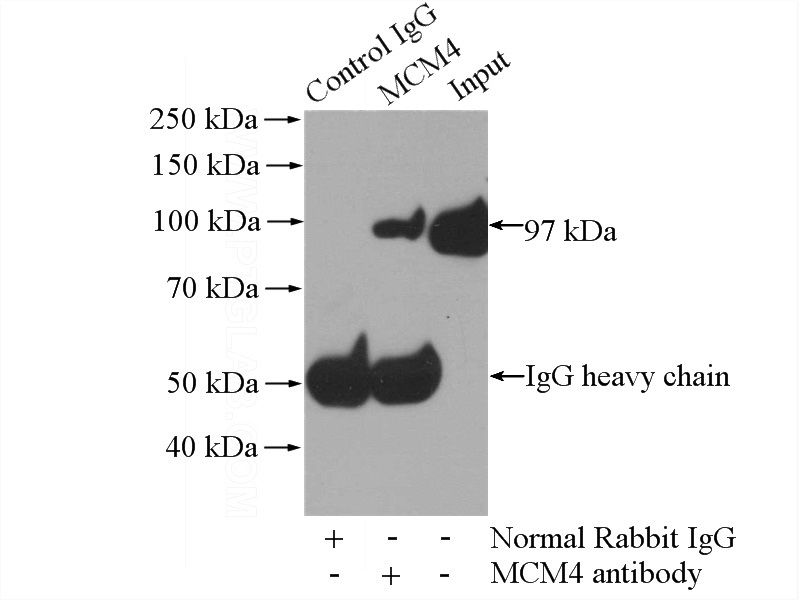-
Product Name
MCM4 antibody
- Documents
-
Description
MCM4 Rabbit Polyclonal antibody. Positive WB detected in HeLa cells, HEK-293 cells, HL-60 cells, human liver tissue. Positive IP detected in HEK-293 cells. Observed molecular weight by Western-blot: 97 kDa
-
Tested applications
ELISA, WB, IP
-
Species reactivity
Human,Mouse,Rat; other species not tested.
-
Alternative names
CDC21 antibody; CDC21 homolog antibody; CDC54 antibody; hCdc21 antibody; MCM4 antibody; P1 CDC21 antibody
-
Isotype
Rabbit IgG
-
Preparation
This antibody was obtained by immunization of MCM4 recombinant protein (Accession Number: NM_005914). Purification method: Antigen affinity purified.
-
Clonality
Polyclonal
-
Formulation
PBS with 0.1% sodium azide and 50% glycerol pH 7.3.
-
Storage instructions
Store at -20℃. DO NOT ALIQUOT
-
Applications
Recommended Dilution:
WB: 1:500-1:5000
IP: 1:200-1:2000
-
Validations

HeLa cells were subjected to SDS PAGE followed by western blot with Catalog No:112554(MCM4 antibody) at dilution of 1:600

IP Result of anti-MCM4 (IP:Catalog No:112554, 4ug; Detection:Catalog No:112554 1:600) with HEK-293 cells lysate 1200ug.
-
Background
DNA replication licensing factor MCM4 (MCM4), also named Cdc21, acts as component of the MCM2-7 complex (MCM complex) which is the putative replicative helicase essential for 'once per cell cycle' DNA replication initiation and elongation in eukaryotic cells. The active ATPase sites in the MCM2-7 ring are formed through the interaction surfaces of two neighboring subunits such that a critical structure of a conserved arginine finger motif is provided in trans relative to the ATP-binding site of the Walker A box of the adjacent subunit. The six ATPase active sites, however, are likely to contribute differentially to the complex helicase activity.This antibody is a rabbit polyclonal antibody raised against the C-terminal 350 aa sequence of MCM4 protein.
-
References
- Valle BL, D'Souza T, Becker KG. Non-steroidal anti-inflammatory drugs decrease E2F1 expression and inhibit cell growth in ovarian cancer cells. PloS one. 8(4):e61836. 2013.
Related Products / Services
Please note: All products are "FOR RESEARCH USE ONLY AND ARE NOT INTENDED FOR DIAGNOSTIC OR THERAPEUTIC USE"
